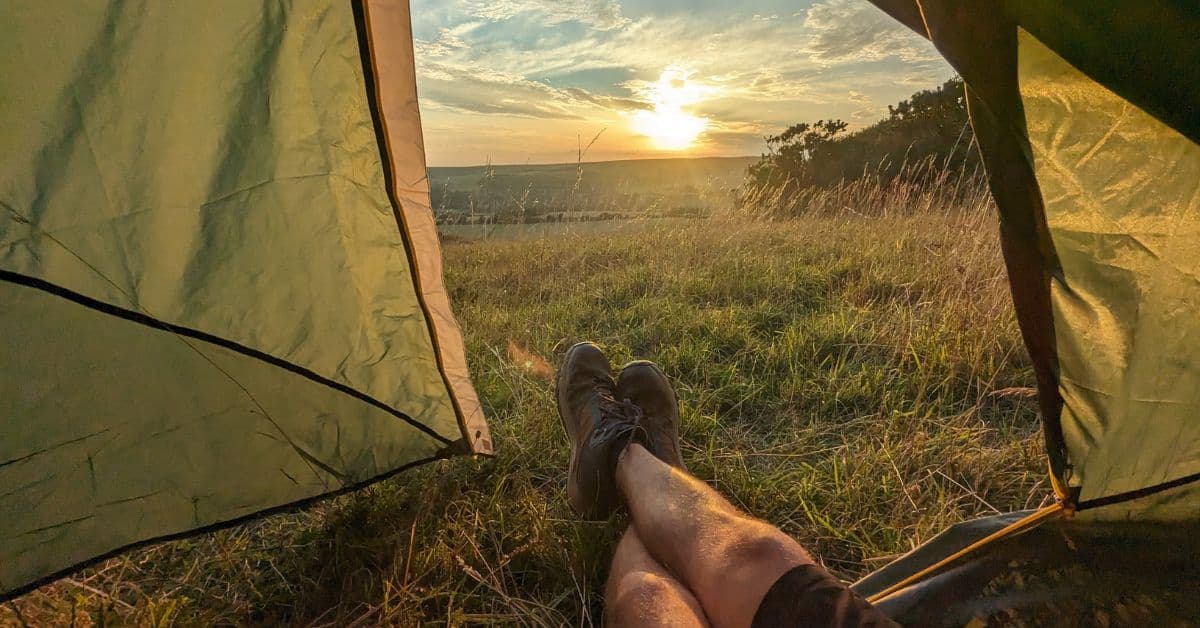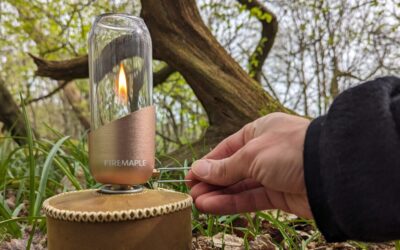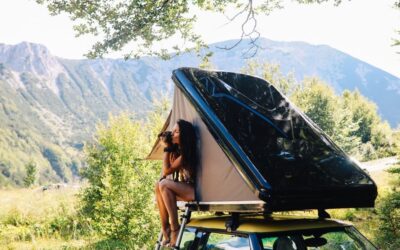There’s a certain magic in heading to the hills for a night of wild camping, however, knowing what wild camping equipment you should pack can make the difference between a relaxing night under the stars or a challenging experience in the great outdoors.
Over the years, I’ve learned – sometimes the hard way – what to pack and what to ditch for that perfect wild camping experience so if you are curious about what goes into a seasoned wild camper’s backpack? Dive into this article, where I’ll share the trusted wild camping kit list I never embark without when venturing into the wild.
Disclaimer: If you make a purchase via the links on our site, I may earn an affiliate commission at no additional cost to you. You can read my affiliate disclosure in the privacy policy. Thanks for your support!
What to Pack for Wild Camping?
Before we begin, let’s get real for a sec – it’s not about chucking everything but the kitchen sink into your backpack. Nope, it’s all about the essentials. And trust me, there’s a thin line between “I’m so glad I packed that!” and “Why on earth did I lug this around?”
UK wild camping means being smart about your kit. It’s a game of less is more when it comes to the items you include on your wild camping kit list.
Shelters and Sleep System
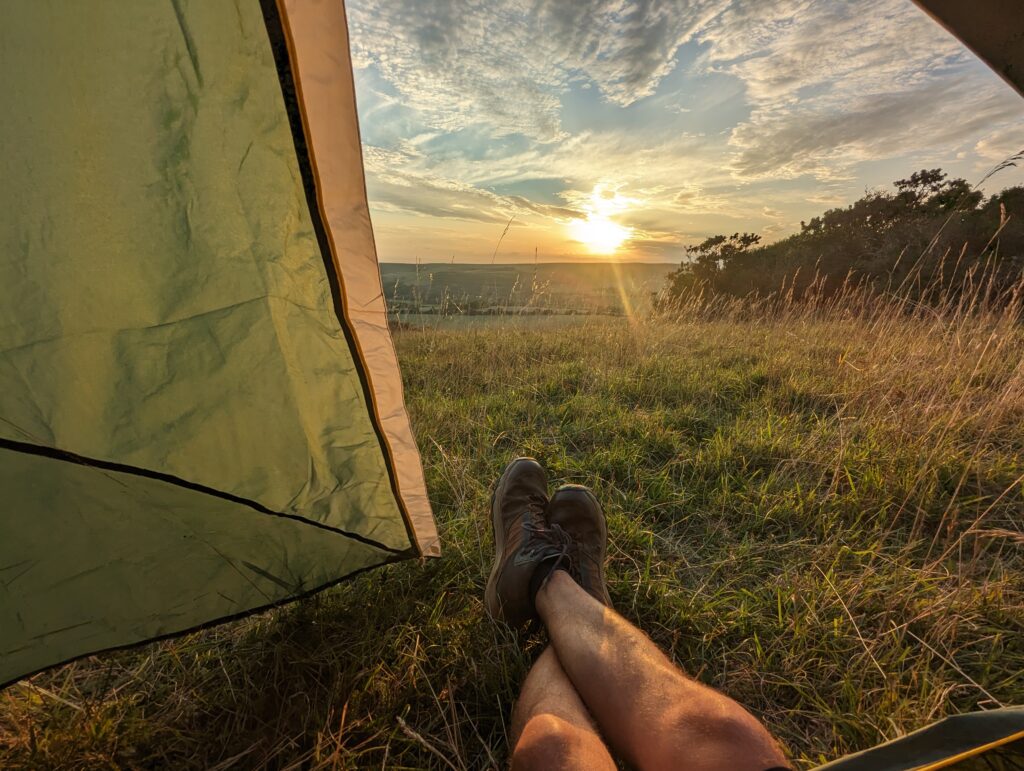
Choosing the Right Shelter
Tents
The timeless choice for many campers. A tent provides a homey shelter, great for protection against unexpected weather shifts. When choosing one, you’ve got to consider how many people you’re packing in, weight, and its ability to withstand the typical British rain.
The Terra Nova Voyager topped our list of the best tents for wild camping, however, my personal choice is Sierra Designs Meteor 3000. This lightweight two-man tent is always my go-to tent for my own wild camping trips.
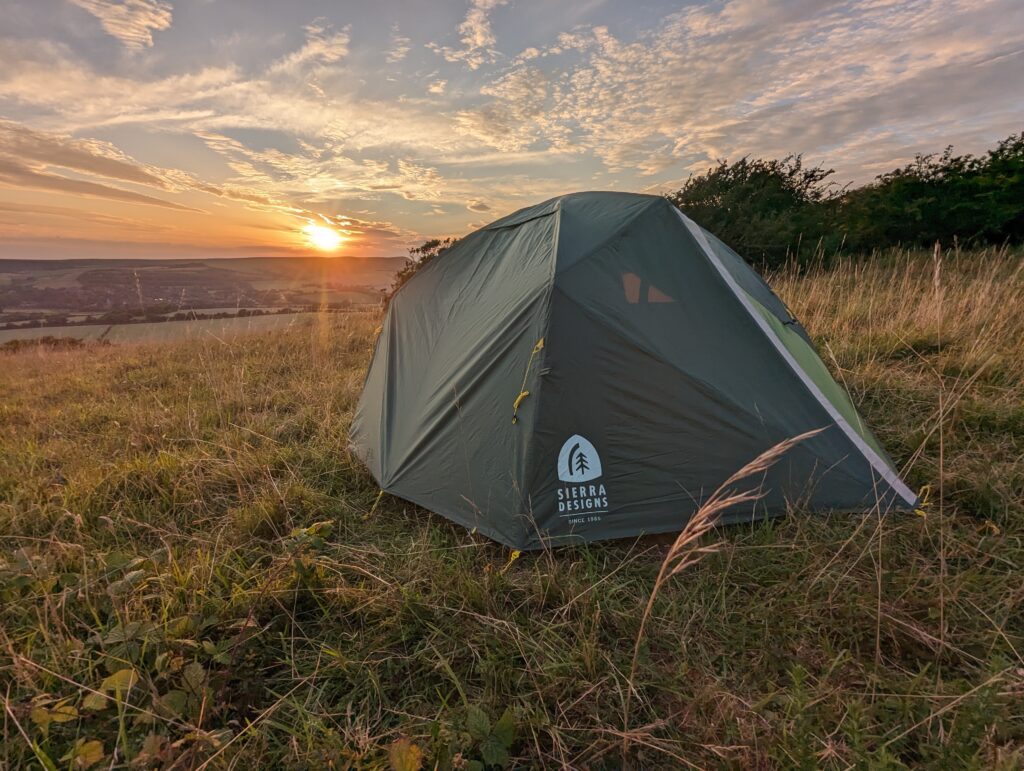
Hammocks
Ever dreamt of sleeping suspended amidst trees? Hammocks are your answer. Ideal for wooded areas and incredibly lightweight. Ensure it comes with a mosquito net if you’re venturing somewhere buggy. If you’re intrigued, learn more about my top picks here. I absolutely love nights spent in my Alpkit Mora which can be upgraded for year-round use with the addition of an underquilt. It is an excellent lightweight hammock for a very reasonable price.
Bivvy Bags
For the true minimalist at heart. A bivouac or bivy for short is basically a waterproof cover for your sleeping bag, keeping you dry and somewhat shielded from the elements. It’s an intimate experience with nature and perfect for lightweight solo camping. If the idea of a night in a bivvy tempts you, consider starting with this breathable bivvy bag. You can also find more about the best bivvy bags here.
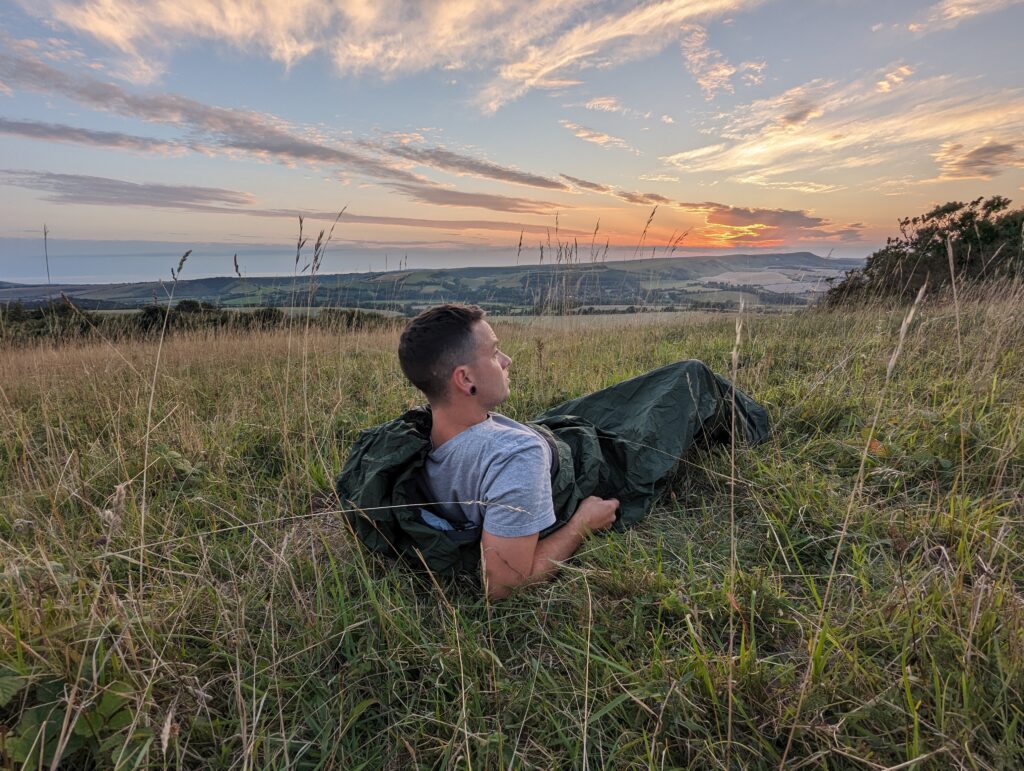
Tarps:
If versatility is what you’re after, tarps are where it’s at. Offering a multitude of setups, they’re perfect for those who know their knots and want to tailor their shelter. Think of them as the origami of the camping world. While they can be used on their own for minimalist protection, they shine brightest when paired with a bivvy bag or a hammock. Acting as a canopy, a tarp provides that additional barrier against rain, wind, and even the sun. Keen to give it a shot? This ultra-light tarp has been a game-changer for many lightweight enthusiasts.
Sleep System Essentials
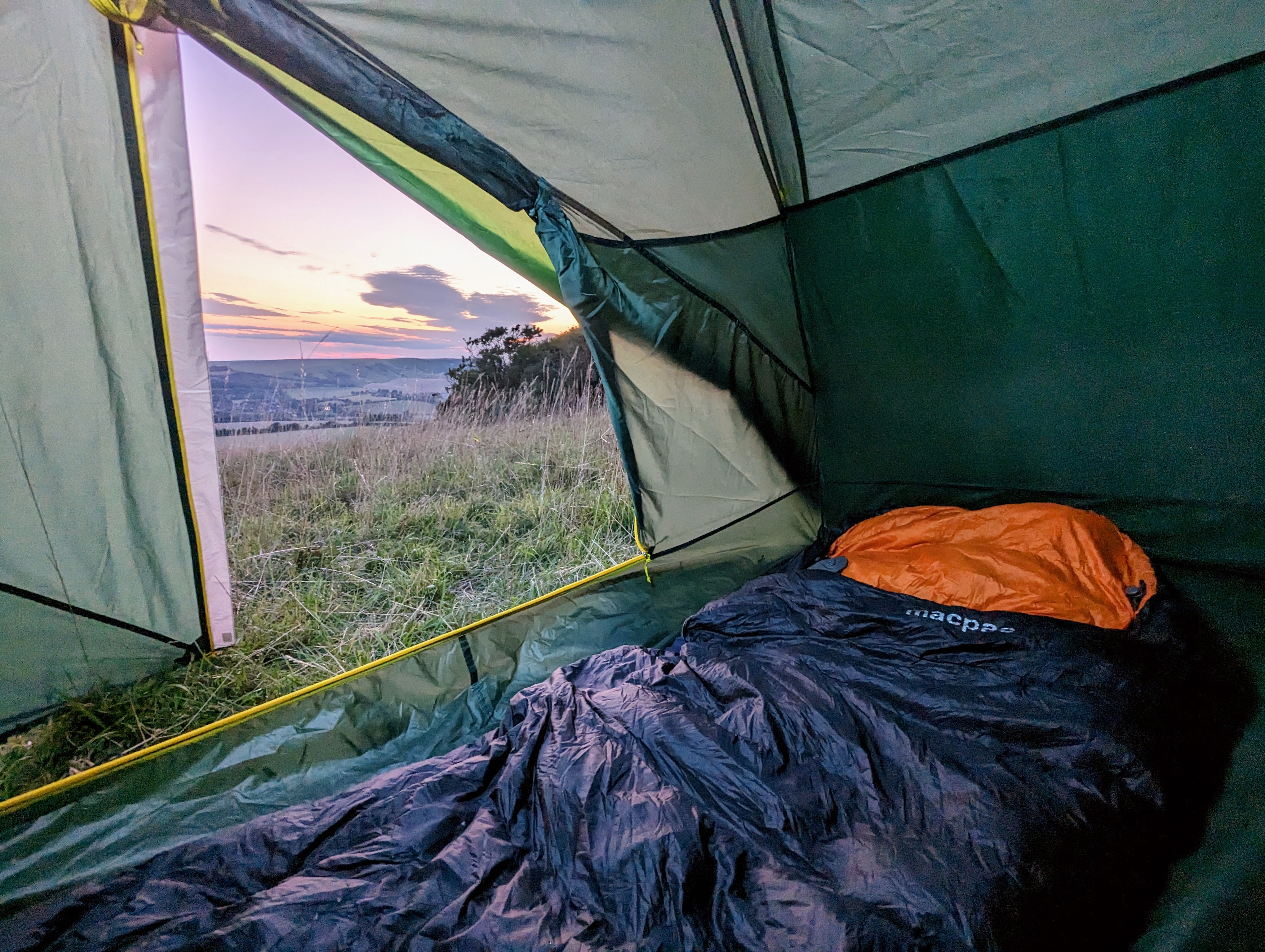
Sleeping Bag:
Never underestimate the importance of a trusty sleeping bag. The wild UK weather can be a bit of a wild card, so focus on the warmth rating. You want to be warm, but not sweating like you’re in a sauna. Moisture protection is essential. Nothing ruins a wild camping trip like a soggy sleeping bag, trust me.
Sleeping Mat:
If you’ve ever tried sleeping directly on the ground, you’ll appreciate this essential bit of kit. Not only does a sleeping mat offer a whole extra layer of comfort, but it acts as a barrier from the cold ground, ensuring you wake up refreshed and not frozen.
Optional Extras:
For those who crave that little extra luxury (and why shouldn’t you?), think about packing a sleeping bag liner for added warmth. An inflatable pillow? It might sound over-the-top, but once you try one, there’s no going back.
The right shelter, combined with a snug sleeping bag and an inflatable mat, truly forms the bedrock of a wild camping micro-adventure. It’s about simplicity and connecting with nature, without skimping on comfort. Next up, let’s tackle essential clothing for your wild camping trips.
Clothing for Wild Camping
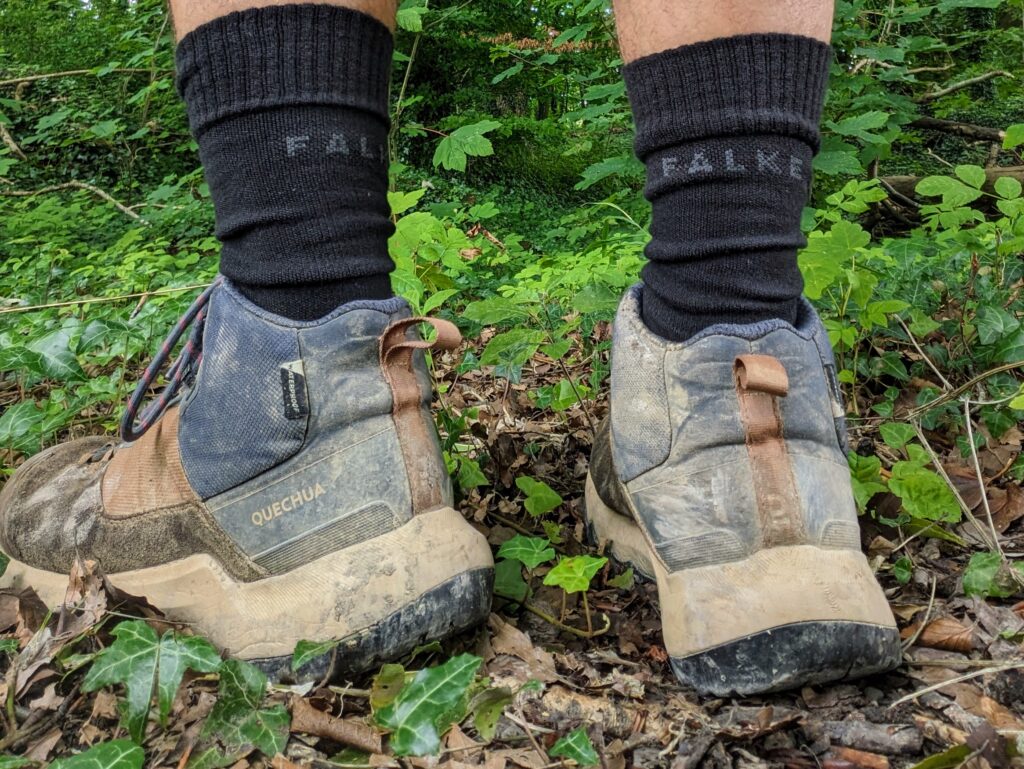
Choosing the Right Apparel
Base Layers:
The unsung heroes of any camping trip. Base layers are vital in maintaining body temperature, wicking away sweat, and keeping you comfortable regardless of the weather. Opt for materials like merino wool that naturally regulate temperature and resist odour. From my countless nights under the stars, the Icebreaker Merino Base Layer is a standout. For more options, you might want to explore my list of top base layers.
Mid-Layers:
Imagine the warmth of a hug in clothing form. Mid-layers, often fleece or lightweight down jackets, provide that crucial insulation. They’re easily packed and can be layered on or off as the temperature demands. The Patagonia Nano Puff Jacket is one that I’ve relied on through chilly nights.
Outer Layers:
Brace yourself against the unpredictable British weather. A windproof and waterproof jacket is non-negotiable. It should be breathable, so you’re not soaked in sweat, but resilient against rain and wind. The Alpkit Balance Jacket has been my shield against nature’s whims. And don’t forget waterproof trousers. They’ll keep you dry during those unexpected downpours.
Walking Trousers or Shorts:
The right pair can make or break your trekking experience. Aim for something lightweight, durable, and with some stretch for those challenging terrains. If you’re expecting warm weather or just love the freedom, a pair of shorts might be your pick. Personally, I alternate between the Revolution Race Trousers and the Columbia Silver Ridge Shorts, depending on the forecast.
Footwear:
Your feet are your vehicle, treat them right. Good, sturdy, and waterproof walking boots are essential. They need to offer ankle support and grip, especially if you’re navigating uneven terrains. I’ve trekked miles in my Quechua Mountain Walking Shoes, and they’ve never let me down.
Hats and Gloves:
Often overlooked, but when the temperature dips, you’ll be thankful you packed these. A good hat retains much-needed heat, while gloves keep fingers nimble, warm and protected against the cold. The North Face Etip Gloves are touchscreen compatible and have been my go-to for colder nights.
Wrapping up in the right clothing is more than just about comfort; it’s about ensuring safety and enjoying the wild without the distraction of cold toes or soggy shirts. With your clothing sorted, let’s move on to our next segment – cooking and nutrition essentials for your wild camping escapade.
Cooking and Nutrition
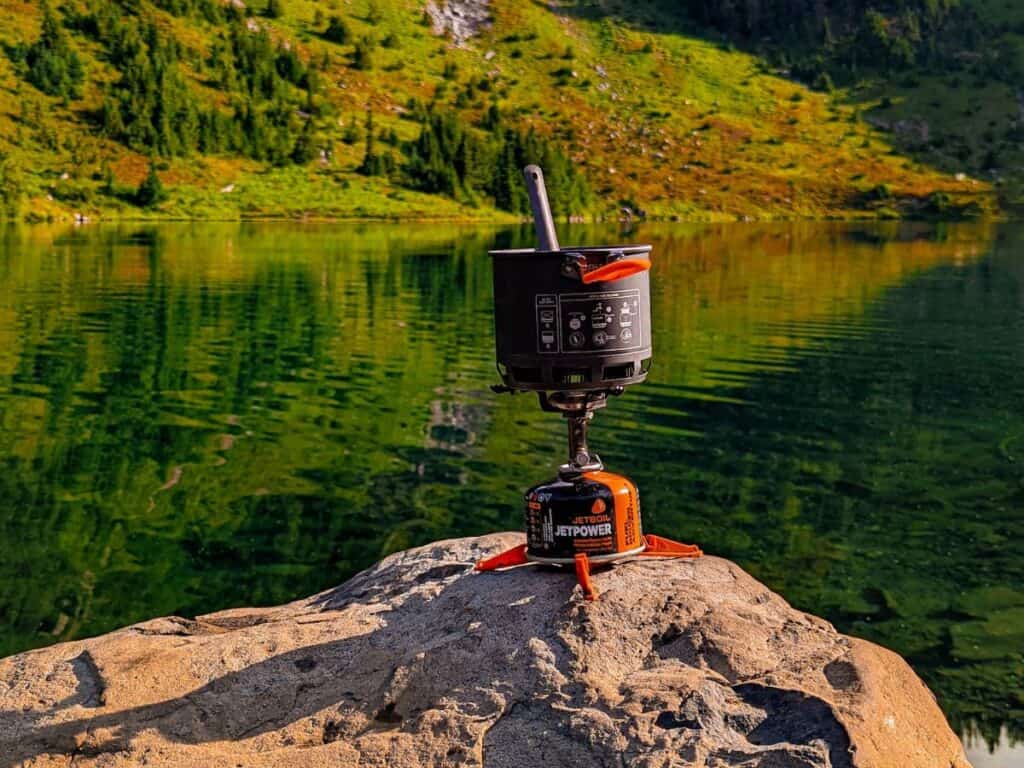
Cooking Gear for Wild Camping
Stoves:
Your cooking stove is the heart of your outdoor kitchen. There are a plethora of stoves out there, from lightweight gas burners to multi-fuel options. It all comes down to how you prioritize between weight and versatility.
The MSR PocketRocket 2 is a compact favourite of many wild campers for its simplicity and efficiency. But if you’re venturing to places where a gas canister might be hard to come by, the MSR WhisperLite Universal might be your ally. Another favourite among wild campers is the Jetboil Flash which will boil water, a whole litre to be precise in 100 seconds. Check out my full camping stove breakdown to match your needs.
Cookware:
No, you don’t need the full kitchen set, but a durable pot and perhaps a pan can suffice. Titanium is the buzzword here for its lightweight and durable nature. The TOAKS Titanium Pot is a tried and true companion that’s been with me on countless expeditions.
Utensils:
A spork can be your best friend – trust me. Combining a spoon and fork, it’s functional and space-saving. The Light My Fire Titanium Spork is one such gem that’s made its way to almost every wild camper’s essentials list.
Water Purification:
In the wild, clean water is gold. Be it purification tablets, a water filter, or UV pens, ensuring your water source is free from harmful bacteria and pathogens is crucial. The LifeStraw is a simple yet effective tool I always carry.
Fuelling Your Adventure: Nutrition Essentials
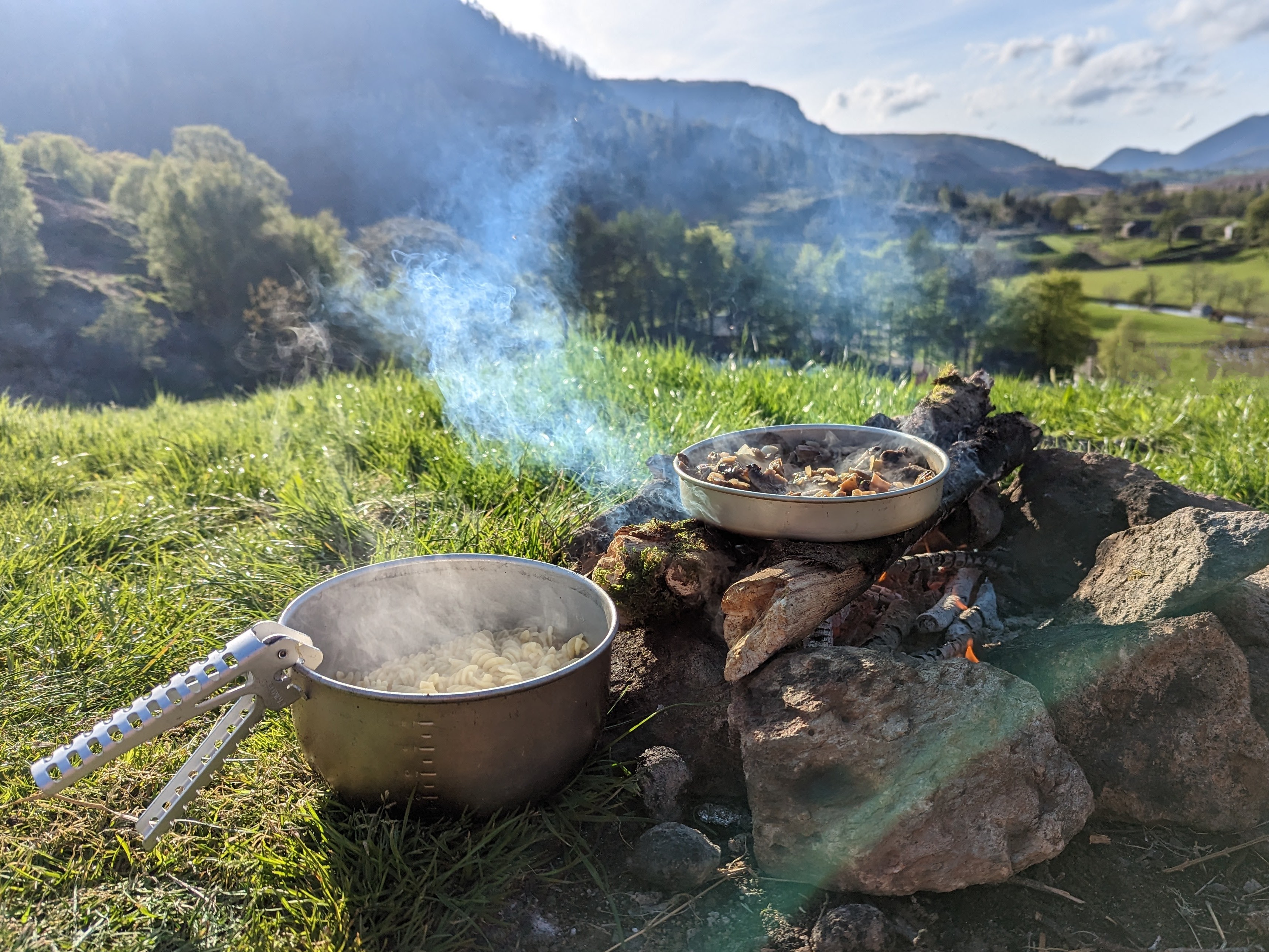
Meals
Opt for high-calorie, nutritious, and easy-to-cook meals. Dehydrated or freeze-dried meal options are a wild camper’s camp staple – they’re lightweight and pack a punch in terms of nutrition. The Firepot range has some delicious options to tantalise your taste buds after a long day.
Snacks
Trail mix, energy bars, or even a bar of dark chocolate can keep your energy up during those demanding treks or are great as a tasty snack to have in camp. Brands like Clif Bar or Kind have some fantastic options that don’t skimp on taste.
Hydration
Remember, water is key. Always ensure you have a full water bottle before you set out for your adventure. Electrolyte tablets can be a lifesaver, replenishing lost salts after a day of hiking and keeping dehydration at bay.
Optional Extras
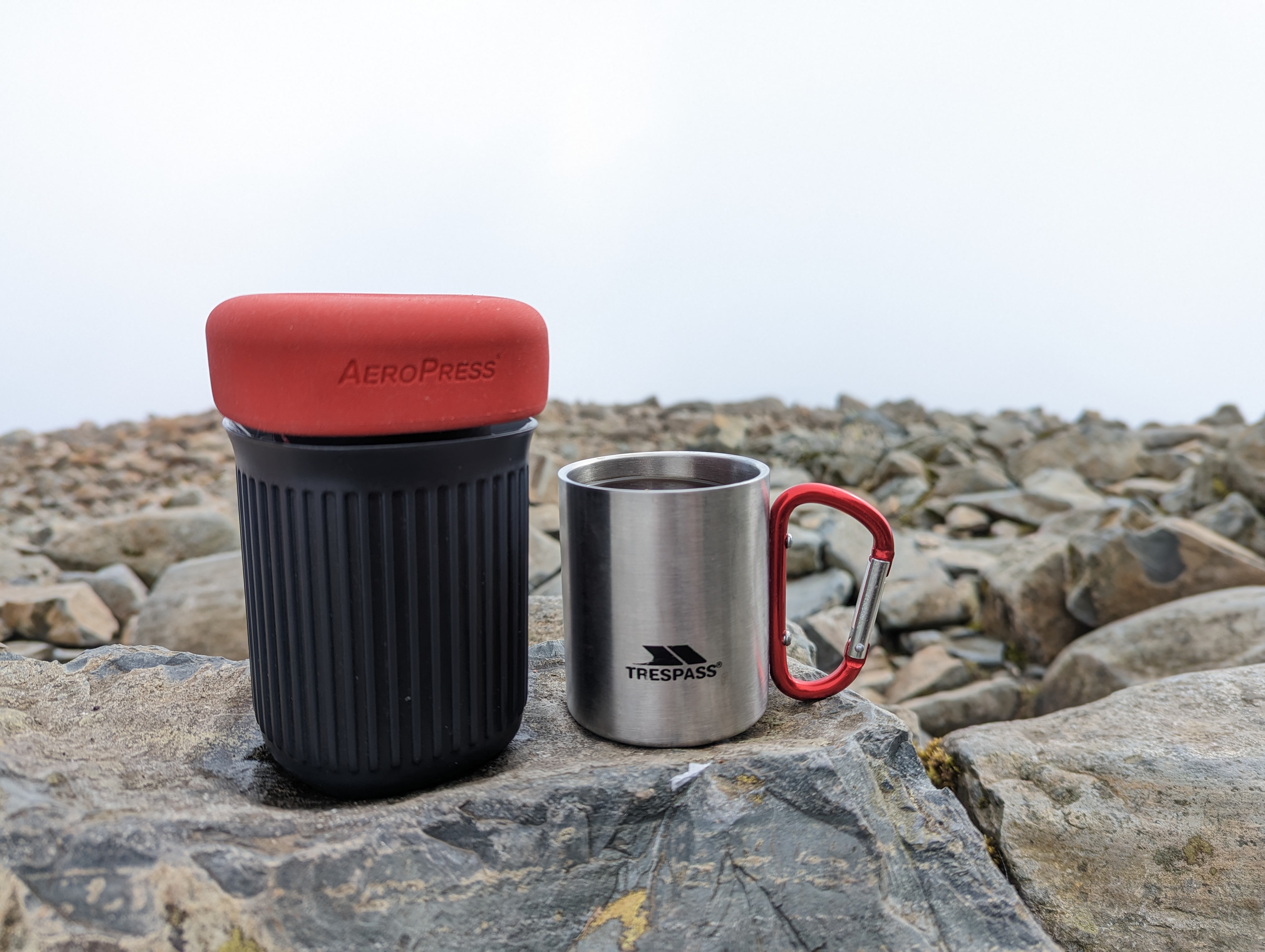
For caffeine addicts like myself, there’s nothing quite like sipping a fresh cup of coffee as you watch the sunset. That’s why, when wild camping, my Aeropress Go is an inseparable companion. This compact device ensures I get my brew just right, no matter where I set up camp.
And here’s a little hack: I often carry a flask of hot water when I leave home, sparing me the chore of boiling water once I’ve settled. It’s a simple luxury, but trust me, when you’re watching the sunrise with a steaming cup in hand, it feels utterly divine.
Cooking and nutrition in the wild might seem daunting at first, but with the right gear and a bit of planning, you’ll soon be dining like a king under the stars. With sustenance sorted, it’s time to focus on the other essentials to ensure safety and enjoyment on your wild camping escapade.
Miscellaneous Wild Camping Equipment
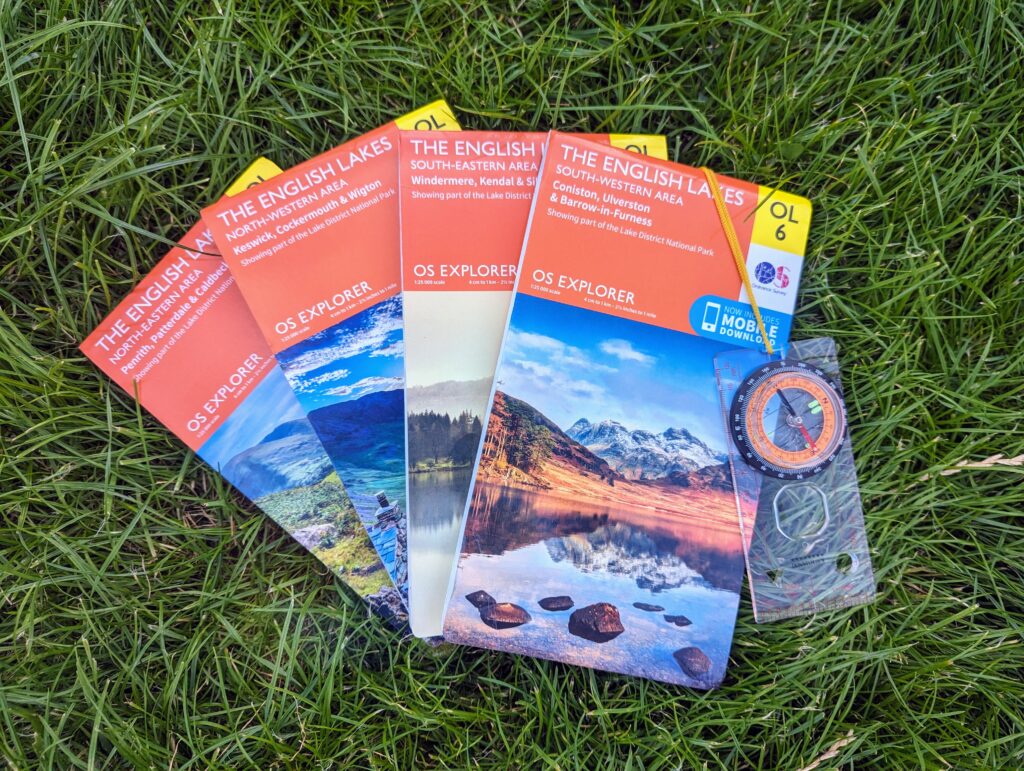
Navigation Tools
If wild camping in a remote location, never rely solely on technology when trekking into the unknown. While GPS devices and smartphones are incredible tools, traditional navigation equipment is vital for when the batteries run dry or signal disappears.
Compass
A classic, essential tool. The Silva Expedition compass, with its durability and precision, has been my steadfast companion on many trips.
Maps
Always bring a physical map of the area you’re in. Not only are they reliable, but studying the contours and routes can give a deeper connection to the landscape you’re traversing. Ordnance Survey provides detailed maps perfect for any wild camping trip in the UK.
GPS Device (Optional)
For an added layer of safety and convenience, consider a dedicated GPS device. The Garmin GPSMAP 64s is an excellent choice, offering reliable tracking even in challenging terrains.
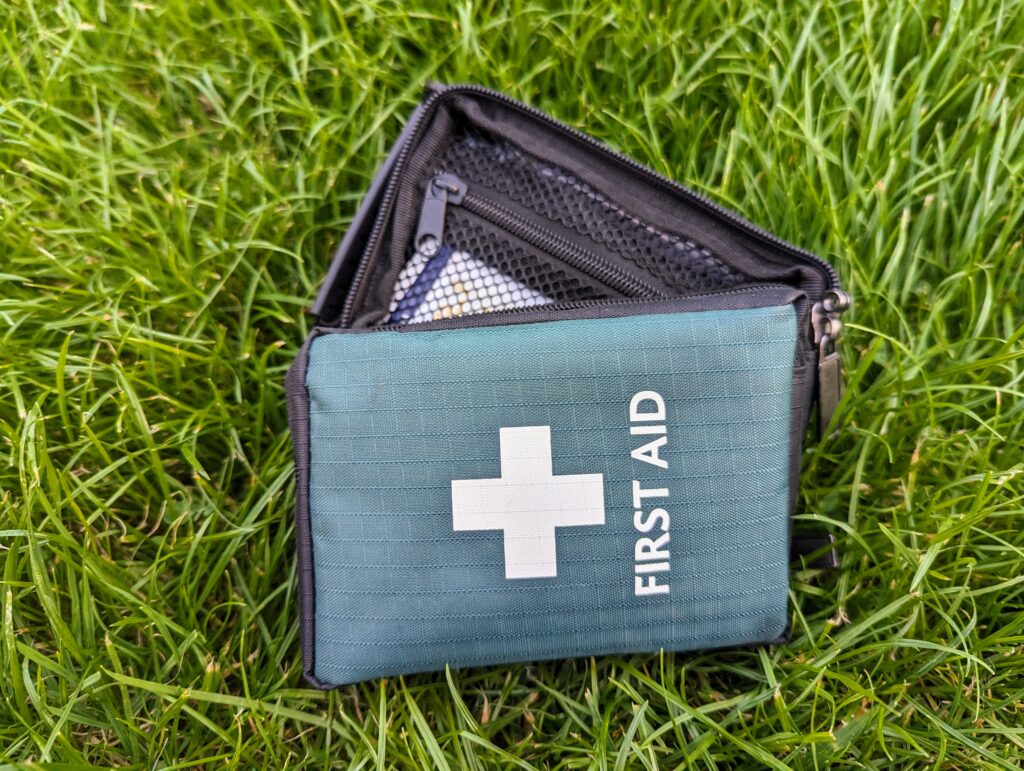
Safety Items
Being prepared for emergencies is crucial. It’s better to have and not need than to need and not have.
First Aid Kit
A compact, comprehensive first aid kit with basics like bandages, antiseptics, pain relievers, and any personal medication is essential. The Lifesystems Adventurer First Aid Kit is a popular choice among wild campers.
Whistle
A loud whistle, like the Fox 40 Classic, can be invaluable if you need to signal for help.
Other Items
Head Torch
Even if you plan to sleep through the night, always pack a reliable headlamp with spare batteries. The Petzl Actik Core offers a great balance of weight, brightness, and battery life.
Fire Starter
Waterproof matches, lighters, or a fire steel can be essential, especially in colder conditions. The Light My Fire Swedish FireSteel 2.0 is both fun and effective for sparking up a flame.
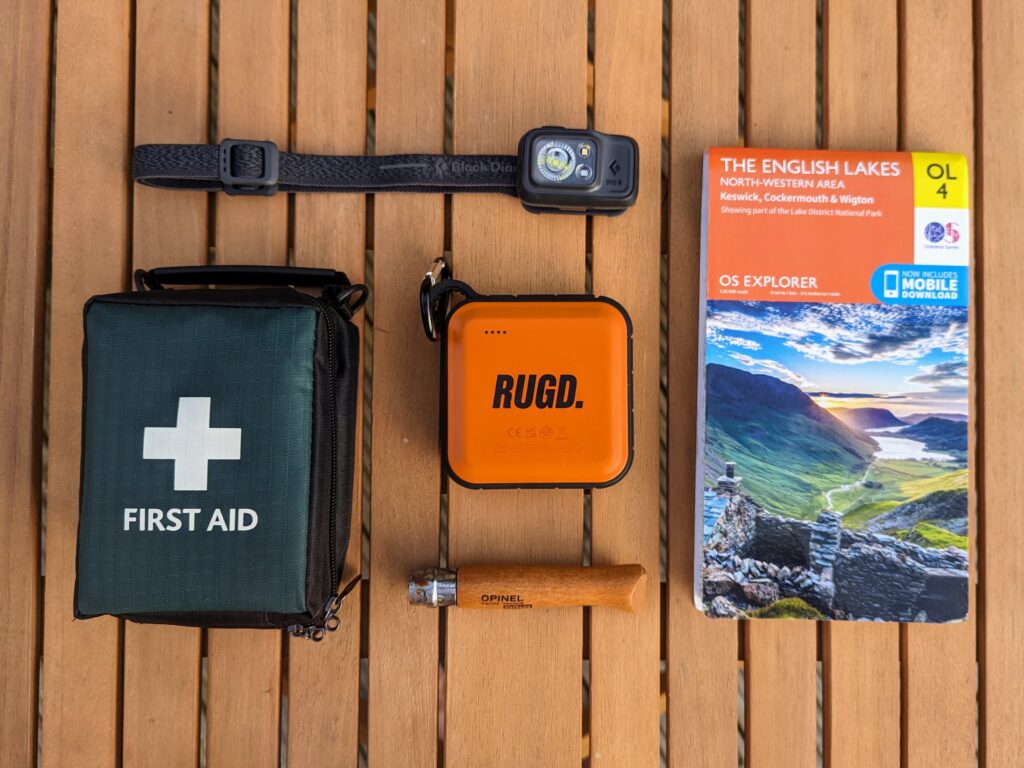
Knife or Multi-tool
A good knife or multi-tool can be indispensable for tasks like preparing food, making repairs, or even emergencies. The Victorinox Swiss Army Pocket Knife is a versatile choice. Personally, I love my basic Opinel Knife I bought in Corsica after completing the GR20.
Dry Bags
If wild camping has taught me anything, it’s that the UK weather can be a tad unpredictable. Dry bags are your gear’s lifeline against sudden downpours, ensuring your essentials remain moisture-free. Coming in various sizes, these waterproof wonders slide effortlessly into your backpack, offering compartmental organization and that vital water-resistant barrier.
Pro Tip: Beyond safeguarding your food and gear, these bags pack a dual-purpose punch. At night, stuff one with your spare clothes, and voila! You’ve got yourself an improvised pillow, ensuring that even in the wild, you’re laying your head down in comfort.
Toilet Paper and Trowel
Nature might call when you’re in the midst of nature! Always pack biodegradable toilet paper and a compact trowel for digging a small hole. The Coghlan’s Backpackers Trowel is lightweight and perfect for the job, ensuring you leave no trace behind. And don’t forget to bury or pack out your used toilet paper to maintain the pristine condition of the wilderness.
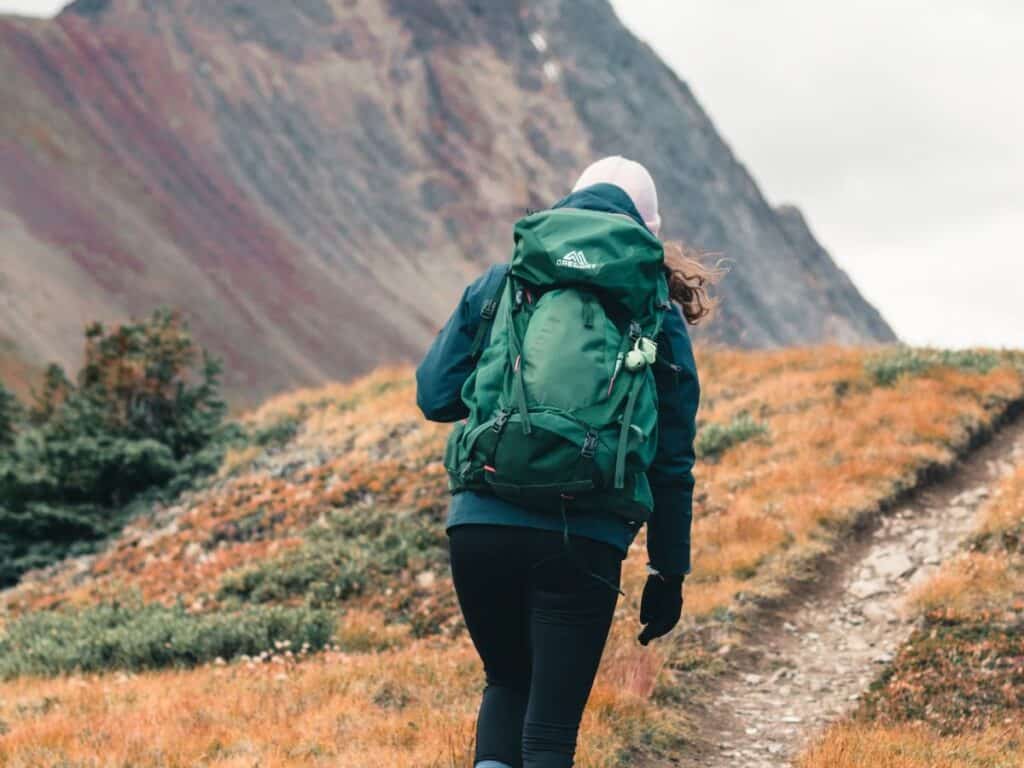
Backpack
For wild camping, I find a 40L pack is more than enough, however, you may want up to a 60L pack for multi-day trips or winter camping where more gear is required. Prioritize comfort with padded straps and an ergonomic design, ensuring it hugs your body without straining any pressure points. Durability is vital; rugged materials like ripstop nylon can fend off nature’s surprises.
Learn how to pack a backpack and utilise all its pockets and compartments to keep everything in place, from large gear to the tiniest snack. Personally, the Osprey Atmos AG 65 never lets me down – spacious, comfortable, and resilient. Remember, a well-packed backpack not only carries your gear but balances it, making your journey more comfortable and enjoyable.
Final Thoughts
Venturing into the great outdoors is both a privilege and a responsibility. The “Leave No Trace” principles aren’t merely guidelines but a deep-rooted commitment every wild camper should hold dear. It’s essential to minimize our footprint, ensuring that we pack out everything we bring in. This philosophy extends to showing respect for the local wildlife and their habitats; after all, we are but temporary visitors in their expansive home.
Equally important is the commitment to environmentally friendly camping. This means making conscious choices about the items on your kit list, such as opting for sustainable gear and understanding the significance of biodegradable products.
The wild calls to us, and with the right wild camping equipment, we can embrace its vast beauty. But as we bask under a sky glittered with stars, pondering whether a five-star hotel can ever compare to a 5 billion-star view, let’s remember the essence of preparation and the profound respect nature demands from each of us.

About the Author
Steve Cleverdon is an adventure blogger dedicated to helping outdoor enthusiasts make the most of their outdoor experiences. With years of travel and many epic adventures including a 3000-kilometre solo hike across New Zealand, Steve has amassed practical knowledge on outdoor gear. You can learn more about his adventures here. Through expert reviews, recommendations, and guides, he equips his readers with the best gear for their next adventure. If you want to send Steve a quick message, visit his contact page here.

